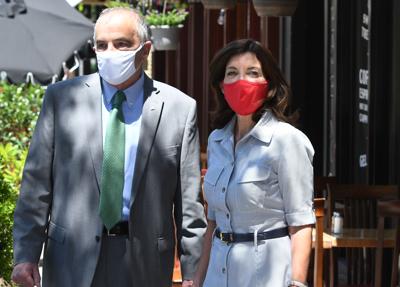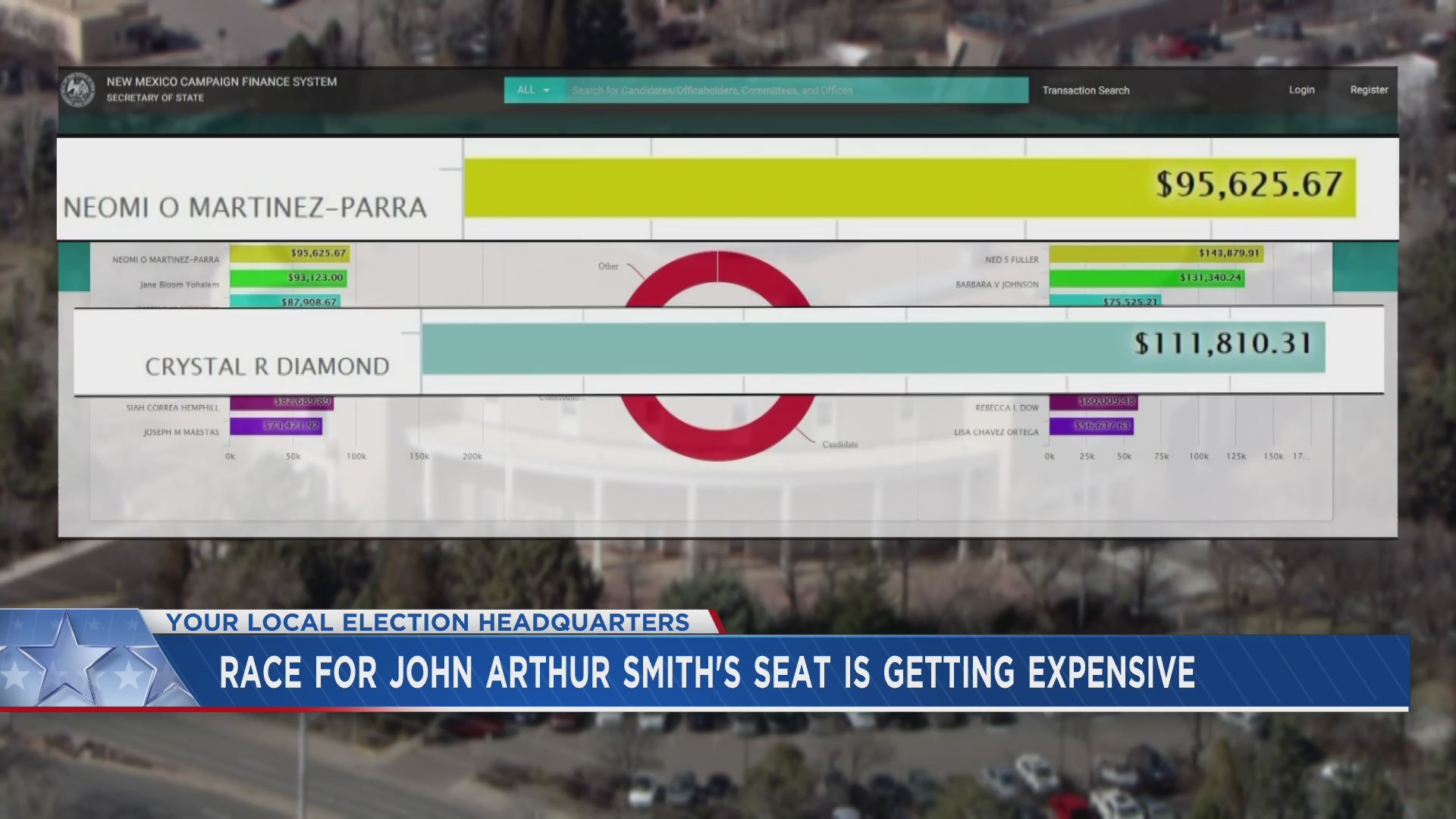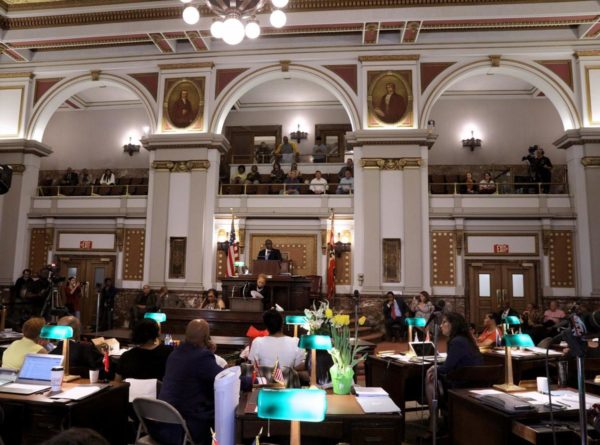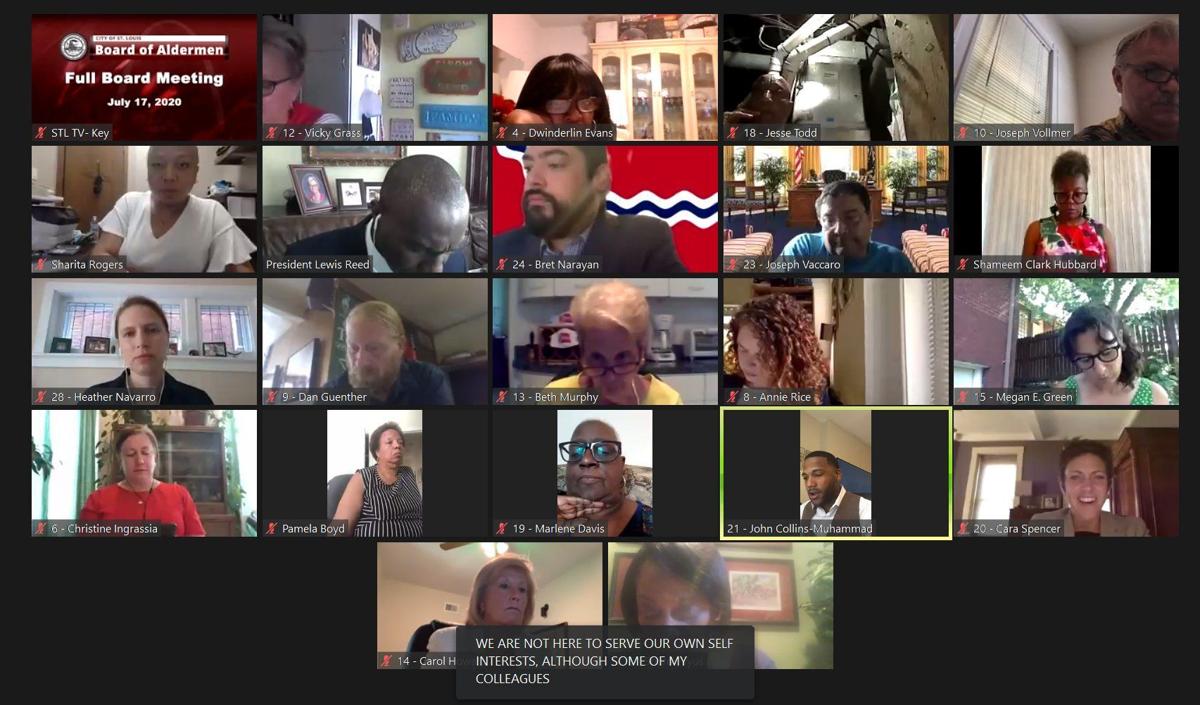Local governments across New York state feeling economic pain
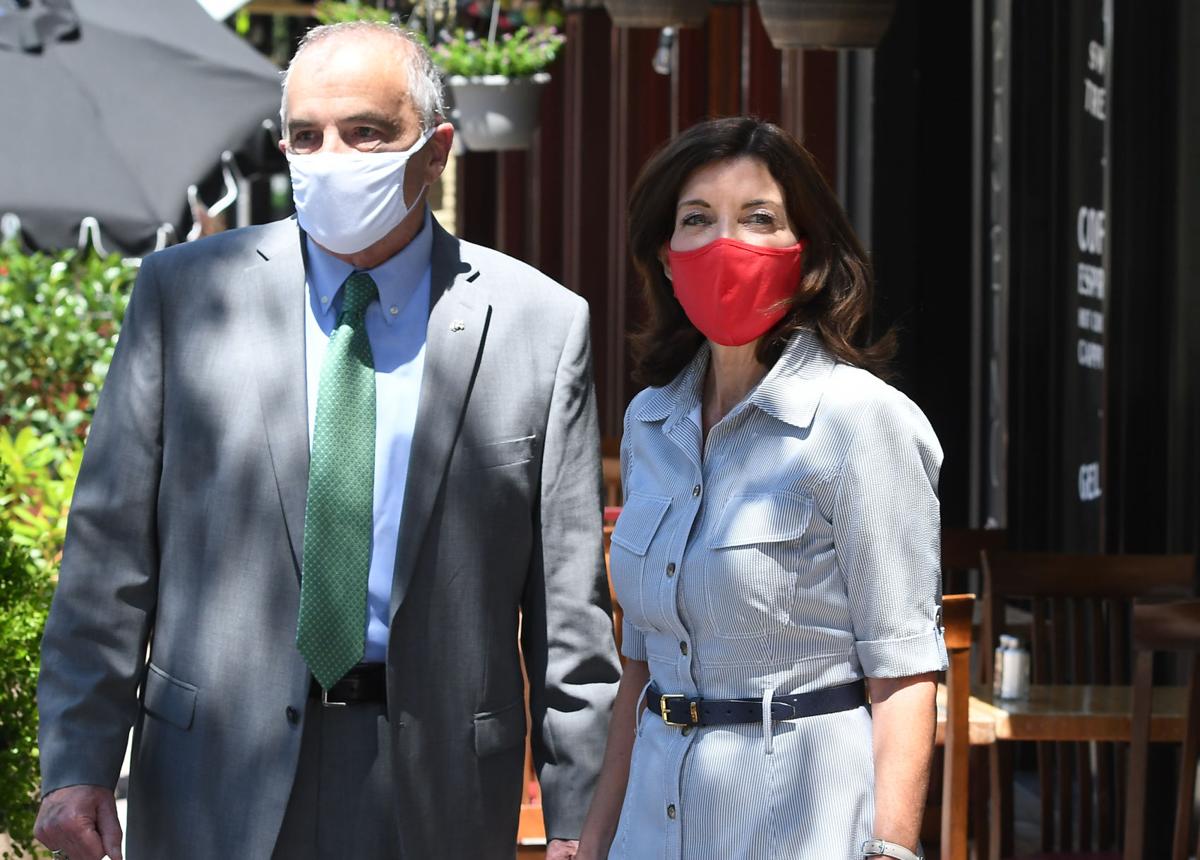
Lieutenant Governor Kathy Hochul, with Auburn Mayor Michael Quill during her visit to Auburn businesses on June 17.
Kevin Rivoli, The Citizen
ALBANY — With revenue drained by this year’s pandemic-driven economic shutdown, local governments across New York are pondering tough spending choices, including reductions in public services and trimming their workforces.
Leaders of counties, cities, towns and villages are also braced for potential 20 percent cuts in state aid, a reduction expected to come because of congressional inaction over a proposed second stimulus package. That legislation has stalled, and if passed at all will likely not advance until after Labor Day.
Meanwhile, Albany, Chemung, Dutchess and Westchester counties have all assembled plans to reduce their payrolls by offering retirement incentives, and several other counties are expected to follow suit, said Mark LaVigne, deputy director of the New York State Association of Counties.
“These are the drastic consequences brought on by the lack of revenue, the potential of cuts and no funding coming from the federal government to help states and localities deal with the losses in revenue caused by the shutdown,” LaVigne told CNHI.
A significant factor in the fiscal crisis is the dramatic drop in sales tax collections from March 1 through May 31. That revenue stream was 27 percent below what it had produced for the same period one year earlier, with major declines in two areas that governments bank on for churning out large sums: automobile dealerships (down 43.7 percent) and restaurants (down 57.8 percent).
The one bright spot is that sales tax collections on internet purchases jumped 132 percent in that same period, though the yield was dwarfed by the declines in all other sectors of the retail and service economy.
School districts are also gearing up for a potential 20 percent reduction in state aid.
With state government facing its own $14.5 billion deficit and hoping for a federal aid package that has yet to materialize, the Rochester City School District announced Aug. 18 it was preparing to cut 20 percent from its budget and was forced to lay off 116 staffers. One wrinkle faced by that school district is that state aid would not cover its pre-kindergarten program because the children are not going to be in physical classrooms.
Gerry Geist, director of the Association of Towns, said municipal government officials are hoping to get at least some relief from legislation now before Gov. Andrew Cuomo that would allow greater flexibility in budgeting. One example is it would give the towns the ability to borrow against their reserve funds, he said.
“The mood is we’re very concerned and we’re keeping an eye on both the state and Washington,” Geist said. “There is still hope that when Congress comes back after Labor Day that maybe they will readdress this situation. But right now many of our members are starting to get their budgets prepared for next year. They are trying to figure out not only what they will do for next year’s budget but how do they address the shortfalls in this year’s budget.”
The fiscal woes of the state and local governments have become even more challenging because Cuomo has delayed making cuts while he pins his hopes on a massive federal bailout for New York, said E.J. McMahon, research director for the Empire Center for Public Policy, an Albany think tank.
“He has crawled way out on a limb and dragged the local governments out with him,” McMahon said. He contended the state would have been better off if cuts to school aid — one of New York’s biggest spending areas — had been packed into the state budget last March, giving the districts time to plan for adjustments to their own budgets.
Now, with the threat of 20 percent cuts looming for the start of the school year, the deep reductions will be especially painful for poor and rural school districts that rely heavily on assistance from Albany, McMahon suggested.
On Thursday, Cuomo’s budget office announced state spending projections for the current fiscal year were being reduced by $4 billion, following freezes imposed on scheduled pay raises for some unionized employees and state contracts, among other belt-tightening measures.
“The Federal government must put an end to its months of dithering and deliver funding to states because if they don’t the temporary withholdings turn into permanent reductions, which would have devastating impacts on schools, hospitals, police and fire departments, along with other critical services,” Robert Mujica, the state budget director, said in a statement.
New York’s cities, for the most part, have a fiscal year that coincides with the calendar year, which means mayors are beginning to assemble their tentative budgets for 2021, said Peter Baynes, director of the New York Conference of Mayors.
“I would expect that over the next several weeks the cuts to their sales tax revenue and the cuts to their state aid are going to be just too great to ignore,” Baynes said.
While the property tax is the only source of revenue that municipalities have control over as they set the tax rates, Baynes said he expects increasing those taxes is likely to be a “last resort” as mayors examine their menu of options for balancing their spending plans.
“I think there will be much more focus on spending cuts, furloughs, layoffs, infrastructure projects being canceled and service reductions,” Baynes said. “That is what will be looked at first.”
Joe Mahoney covers the New York Statehouse for CNHI’s newspapers and websites. Reach him at jmahoney@cnhi.com






